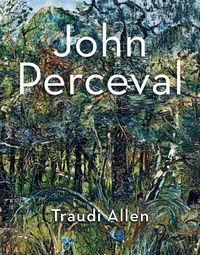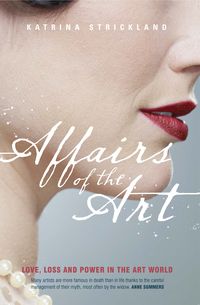←Back to Modern Love
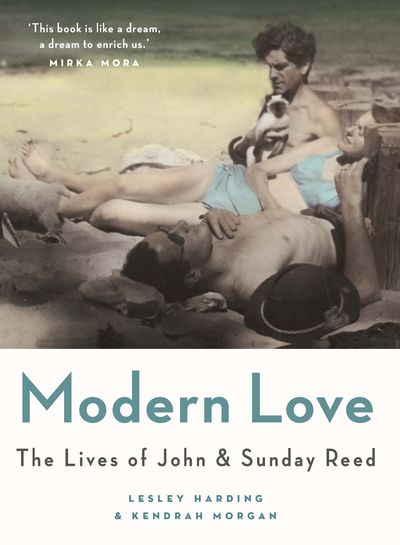
An extract from “Modern Love”
On the day that artist Sidney Nolan walked into John’s office in February 1938, his keen intelligence and secure faith in his own ability were his clear strengths. In John’s words he was, at twenty-one, ‘a sort of wild cat spirit, unformed, uncertain of his destiny but arrogantly confident that the fates were on his side’.
Seeking a travel bursary to go to Paris to paint, Nolan had made an appointment earlier that day with Keith Murdoch at the Heraldnewspaper; Murdoch was soon to become a trustee of the National Gallery of Victoria and known as a supporter of emerging artists. His response to Nolan’s small folio of abstracted, calligraphic line drawings was indifferent — they were experimental at best — but he did suggest that he show the folio to the paper’s art critic, the more sympathetic Basil Burdett. Burdett also sent the youth on his way, this time to George Bell, then still president of the CAS. Bell, in turn, brushed Nolan aside, saying that his work would have more appeal to John Reed, a solicitor and contemporary art collector who worked a short distance away in Collins Street.
Not to be dissuaded by the string of rejections, Nolan continued on to John’s office, where he mumbled so much that John found him almost impossible to understand. Yet something about the young man convinced him that here was a rare human being who had a very definite statement to make. John was instinctively sure that nothing would prevent Nolan from making it, no matter what form it took.
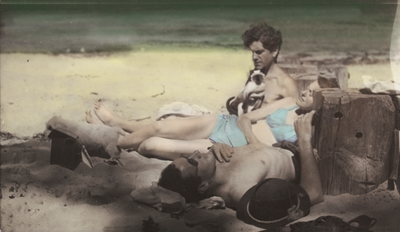
John took the drawings home to show Sunday and to attempt to convey to her a sense of the inexplicable excitement he felt about their creator. The Reeds invited Nolan to dinner at Heide the following night, when he proceeded to exasperate the slightly deaf Sunday with more shy mumbling. It did not take the Reeds long, however, to discern he had a voracious appetite for knowledge and was surprisingly well read, with a penchant for poetry that Sunday shared.
Nolan was a working-class lad from St Kilda, with a talent for competitive cycling, a modest amount of commercial art experience and an idealistic notion that if he could somehow get to Europe he would find fame as a modern painter. Born in 1917, he was the son of a tram driver and had left school at fourteen to attend Prahran Technical College, taking a course in the design and crafts department. In 1933 he commenced a six-year stint at the Fayrefield Hat Factory in Abbotsford, producing advertising and display stands by day while attending art classes at the National Gallery School by night, albeit in a sporadic fashion.
An autodidact, he haunted the Melbourne Public Library reading room next to the Gallery School, devouring books on art, poetry and philosophy, which led to self-directed experimentation in his own art practice, aided by his extraordinary observation of the visual world. ‘I learnt to paint in precisely the same way as any other worker would have to do’, Nolan later wrote: ‘Look around him, use his eyes, fight for the opportunity to strengthen his vision’. In 1936 he moved out of home into the first of several city studios, and within two years was determined to become a full-time artist.
He made enough of an impression on John and Sunday that first night to be invited back, and in due course became a regular visitor to Heide. The sophisticated and refined Reeds, with their intellectual interests, contacts and obvious resources, represented a gateway to another social and cultural plane, and Nolan was open to the many benefits to be gained from their patronage. Stimulating company, financial support, gracious hospitality and the extensive Heide library would soon be at his disposal. A personal dilemma he was wrestling with, about whether to become a poet or painter, would resolve itself with the help of Sunday’s complete conviction that he was the latter: to prove her point she even sat him down with paints and paper, then read to him in French and asked him to paint or write what he felt. To John and Sunday Nolan appeared as a potential and timely replacement for Atyeo. His dream of Paris gradually diminished as he reset his objectives on more likely success in the immediate setting with the assistance of his new benefactors.
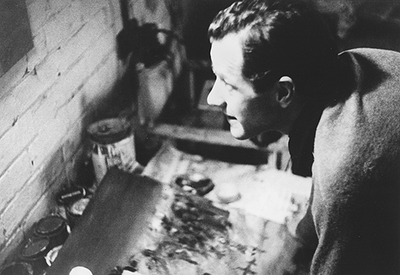
At the time Nolan met the Reeds he had a beautiful and artistically talented girlfriend, Elizabeth Paterson, the great niece of well-known landscape painter John Ford Paterson. She was a student at the National Gallery School and close to another accomplished and lively art student, Alannah Coleman, who would also become involved with the Reeds, if more peripherally. Alannah was the witness when, on 16 December 1938, Nolan and Elizabeth married in South Melbourne without parental consent. The bride’s respectable family were surely not thrilled when the news leaked out, as their son-in-law had no steady job and no apparent prospects. The Nolans were equally dismayed, with Nolan’s mother learning of the union only when the marriage certificate fell out of his pocket.
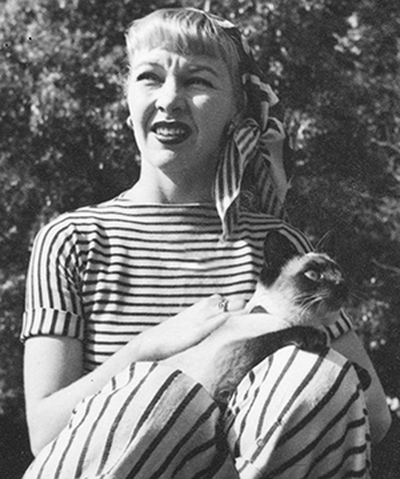
Soon after their wedding the couple moved to Ocean Grove on the Bellarine Peninsula, where a cottage had been offered to them rent-free for a year, providing an opportunity for both to focus on their art practices. Nolan took intermittent work on an asparagus farm to make ends meet and the Reeds probably provided additional funds. He set up a studio at the cottage and produced some important formative works, including a series of paintings in red, white and blue, and strikingly innovative collages made of cut-out sections of steel engravings inter-locked in grid designs. These were inspired by the fragmentary use of language in the verse of the revolutionary French poet Arthur Rimbaud — an inventive proto-surrealist whose achievements Sunday held in the highest esteem. John recalled that Nolan became absorbed in Rimbaud’s personality and poetry, which ‘appeared to him almost as a revelation & as the epitome of all his own powerful urgings and rebellious nature’.
The Reeds made weekend visits to Ocean Grove to inspect the results of Nolan’s creative efforts and approved of his submission to the inaugural CAS exhibition staged at the National Gallery of Victoria in June that year — a radically abstracted image titled Head of Rimbaud (1938–39) that scandalised some viewers with its flagrant disregard for convention, not least its smearing of boot polish in place of orthodox materials. It is possible to detect in the compositional elements of this work echoes of Atyeo’s Organised Line to Yellow, which hung above the fireplace at Heide and would have been an object of discussion and scrutiny when Nolan visited the Reeds.
John and Sunday’s influence caused some strain between Nolan and Elizabeth. She found their visits intrusive, and it is probable that the physical attraction developing between Nolan and Sunday was already evident. Sunday had, however, recently embarked on a new liaison with the Herald cub reporter Peter Bellew; an affair motivated not only by the sexual possibilities for both her and John but also by Bellew’s alluring mix of creativity and charisma. He was a close associate of Cynthia’s, a convert to the cause of modern art and, according to John, a born entrepreneur who harboured ambitions ‘aimed vaguely at the theatrical world’. Bellew introduced the Reeds to Colonel de Basil’s fabulous Ballet Russe company, which was then touring Australia and taking Melbourne by storm. John and Sunday already had a keen interest in ballet and regularly attended performances, forming friendships with three of the dancers.
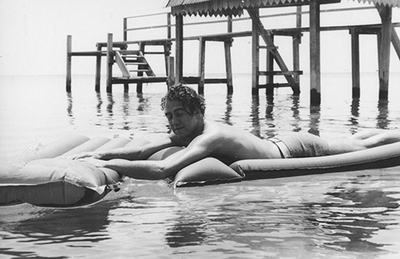
Bellew’s romance with Sunday was presumably still underway in late 1939 when he took over from Basil Burdett, who had fallen ill, to manage the landmark Herald Exhibition of French and British Contemporary Art, which featured the work of many modern masters — from Cézanne and Picasso, to Walter Sickert and Stanley Spencer, Max Ernst and Salvador Dalí. Sponsored by Keith Murdoch, the show opened in the Melbourne Town Hall in October, a few weeks after the declaration of war in September, and attracted vast crowds. By this point Bellew was the CAS secretary, having been persuaded by the Reeds to take over the role from Adrian Lawlor and assist in raising the groundswell of radical support that effectively deposed George Bell as president in June 1940 — after which John had an even more powerful influence within the organisation.
During the course of the year Sunday had introduced Bellew to Nolan and Bellew subsequently acquired one of Nolan’s early abstract paintings, The Eternals Closed the Tent (1939). John was complicit in Sunday and Bellew’s affair, but his own rapport with his wife’s latest lover was an uneasy one due to a clash of personality. Perhaps to his relief, by the end of 1939 Bellew had moved to Sydney to join the Daily Telegraph, before becoming the editor of Art in Australia, the nation’s most eminent art magazine. During the time Art in Australia was under his stewardship, the art historian and director of London’s National Gallery, Sir Kenneth Clark, declared it ‘unquestionably the best art magazine being published today anywhere in the world’. Bellew stayed in contact with the Reeds and was encouraged by John to set up the Sydney branch of the CAS, thus the two men had to maintain a professional affiliation.
With Bellew out of the picture, Sunday was now more available for a dalliance with Nolan, who came to Melbourne regularly throughout 1939 and in December moved back to the city with Elizabeth to run a pie shop in Lonsdale Street, living directly above. Although Nolan was twelve years younger than Sunday, it was almost assured that a physical relationship would develop, for not only were they mutually infatuated but by now, having trialled a new mode of living and loving with Atyeo, the pattern of the Reeds’ marriage was settling into place. Sunday would take lovers with John’s benediction and the associations would continue until they naturally ran their course — usually because the third party found the arrangement untenable, as it functioned primarily on the Reeds’ terms. Eventually such psychological drawbacks would outweigh the sexual and material benefits. As one insider observed, communal relationships were very much a framework for life at Heide, with Sunday the prime mover and John in full moral support:
This was quite a conscious and certainly long mulled-over life approach of theirs … if they had what, in the social sense, could be called ‘sin’ it was the conviction that others were as ready, or could properly be induced to be as ready, as themselves for the braving of new experience.
This insider was budding writer and later political journalist Michael Keon, who himself became closely involved in the Reeds’ lives in late 1939. His recollections of the emotional entanglements at Heide furnish valuable insights into the Reeds’ modus operandi in the late 1930s and 1940s, and their philosophy of living. Keon was working for the Herald, and writing fiction on the side. Having a bent for the visual and performing arts, he had befriended Burdett. His introduction to John and Sunday came by way of Bert and Mary Alice Evatt, whom he met at a function hosted by the manager of the de Basil Ballet Russe company. The magnanimous Evatts warmed to Keon and discussed with him the excitement of the recent opening of the Herald exhibition. They recognised the project’s significance in reinforcing the Reeds’ and the CAS’s attempts to demonstrate that Australia had the local impetus and means for a true modern world vision. Evatt strongly urged Keon to join the CAS and seek out John Reed. This led to dinner with John in the city, from where they proceeded to a coffee party in the Elizabeth Street studio of the poet, painter and future spiritualist Francis Brabazon, one of the Reeds’ more alternative acquaintances. An invitation to Heide to meet Sunday soon followed.
Keon’s first impression of Heide stayed with him forever and may well reflect how Nolan himself had felt on his initial visit. It was a completely new world to Keon and for the first time in his life he believed that he had ‘got a toe hold in the Garden of Eden’. He also was at home in an intellectual and spiritual sense; the Reeds gave him a feeling of a connection with a larger, more expansive world: ‘it was like, in a way, going to Church, it was almost a holy experience. And they were so rational, so open, so warm, no hint of anything that subsequently developed’.
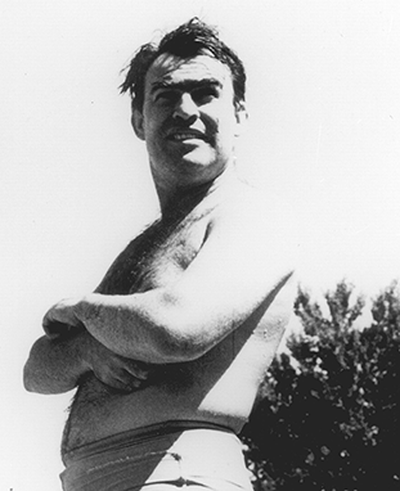
Intelligent, knowledgeable and articulate, Keon fitted in well at Heide and for him the first few months of 1940 were halcyon days. A select crowd of creative types was constantly coming and going, with guests staying for a weekend or a few days at a time. He graduated to the inner circle of closer confidants, which had recently expanded to include a number of artists involved in the CAS, notably the intense and cerebral painter Albert Tucker, with whom Keon would form a long association. Like Nolan, Tucker was largely self-taught, even if his early art practice initially demonstrated a more academic approach. On leaving school he took a day job as a commercial artist and studied life drawing at the Victorian Artists Society at night. In 1937 Tucker made contact with Danila Vassilieff and another émigré artist, Yosl Bergner, who offered him a direct conduit to developments in European art, and his subsequent embrace of modernism led him to become one of the CAS’s most staunch and vocal advocates.
His visits to Heide were often spent immersed in the library, avidly reading the international art publications John and Sunday collected. In 1939 Tucker introduced the Reeds to his vivacious partner Joy Hester, a talented yet disillusioned student of the National Gallery School. Joy met Sunday at the opening of the Herald exhibition, and apparently struck up a conversation with the precocious comment, ‘Do you believe in the equality of the classes?’ to which Sunday replied, ‘I believe in love’. Joy’s irreverence appealed and a vital friendship was born, although John took a little more convincing. His first impression of Joy was of a ‘real little hoyden’, a peroxide-blonde teenager who had been expelled from school and was ready for any mad scheme. She seemed ill-informed about almost everything but was at least eager to be told. Fortunately, John noted, she had been somewhat tamed by Tucker, with whom by this stage she was living.
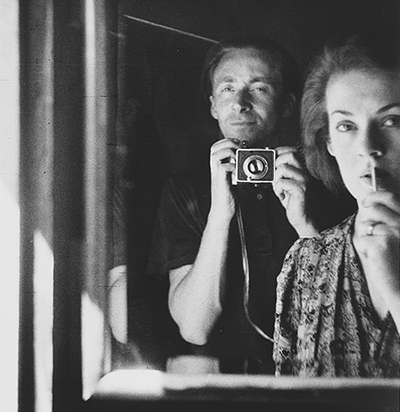
During Keon’s association with Heide other key figures would also come into the fold, such as Tucker and Joy’s friend and fellow painter Yvonne Lennie, and later her husband-to-be, the remarkable yet rather enigmatic artist Arthur Boyd. Boyd’s surrealist-inflected visionary paintings of the early 1940s, investigating the human condition and inner turmoil engendered by war, seemed at odds with his quiet and unassuming personality. His endeavours greatly impressed the Reeds, who recognised him at once as an important and idiosyncratic talent in the making and acquired allegorical works such as Butterfly Man (1943) and The Lovers (1944), both turbulent expressions of primal urges rendered with strong colour and gestural paintwork.
Boyd belonged to a creative dynasty that centred on Open Country, the Murrumbeena home of his parents Merric, a potter and painter, and Doris, also an artist. An informal gathering place for Melbourne’s bohemia in the outer south-east, Murrumbeena was all-inclusive by comparison with Heide’s more rarefied atmosphere. Tucker and Joy were regular visitors to both places.
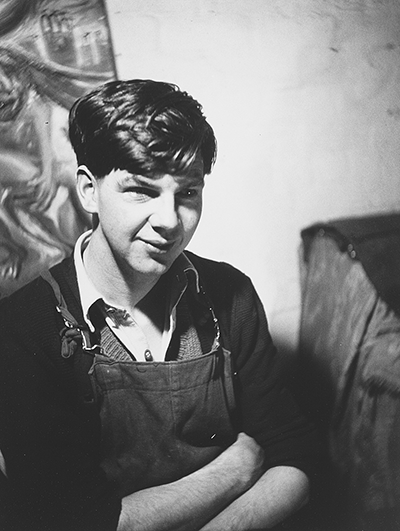
Boyd, however, maintained a certain distance from Heide, finding the Reeds somewhat precious and restricting, though his younger sister Mary, an ethereal presence, would become one of their favourites, as would his maverick friend John Perceval, an artist originally from Western Australia. Perceval had contracted polio as an adolescent and developed his prodigious art skills during his rehabilitation. John first met him when he was still bed-ridden. While he found his paintings relatively crude, the intensity and emotive power of Perceval’s imagery signalled the potential extent of his artistic capacities. John and Sunday regarded Perceval’s friendship with Boyd as a serendipitous alignment of extrovert and introvert personalities, and they were further delighted when Perceval and Mary fell for one another as teenagers. The young couple married at Murrumbeena in 1944 and John and Sunday attended, with typical thoughtfulness supplying a beautiful wedding cake.
Such was John and Sunday’s belief in the talents of this constellation of rising stars that they initiated a system of stipends, to encourage the artists to relinquish their more mundane avenues of employment and focus on making art. The Reeds lived fairly simply themselves, putting their money where their hearts were. They regularly purchased examples of these artists’ work; when the walls were full the hallway at Heide became stacked with paintings, with more on storage shelves in the dining room.
Yet there were unspoken terms to be accepted upon entering into this tacit contract. These included making a practical contribution to the running of Heide when in residence, such as assisting in the garden and kitchen, offering gifts of paintings, poems and other sentimental gestures, and being attentive to the Reeds’ intellectual needs.
For Sunday in particular, mere acquaintanceship was not enough — she required intense interactions and deep commitment from others, and John worked hard to facilitate this. Such desires naturally led to misunderstandings, and not all the recipients of the Reeds’ largesse could meet the demands of their benefactors.
Modern Love: The Lives of John and Sunday Reed is a double biography by Lesley Harding and Kendrah Morgan, a co-publication from MUP’s Miegunyah Press, the State Library of Victoria and the Heide Museum of Modern Art.
